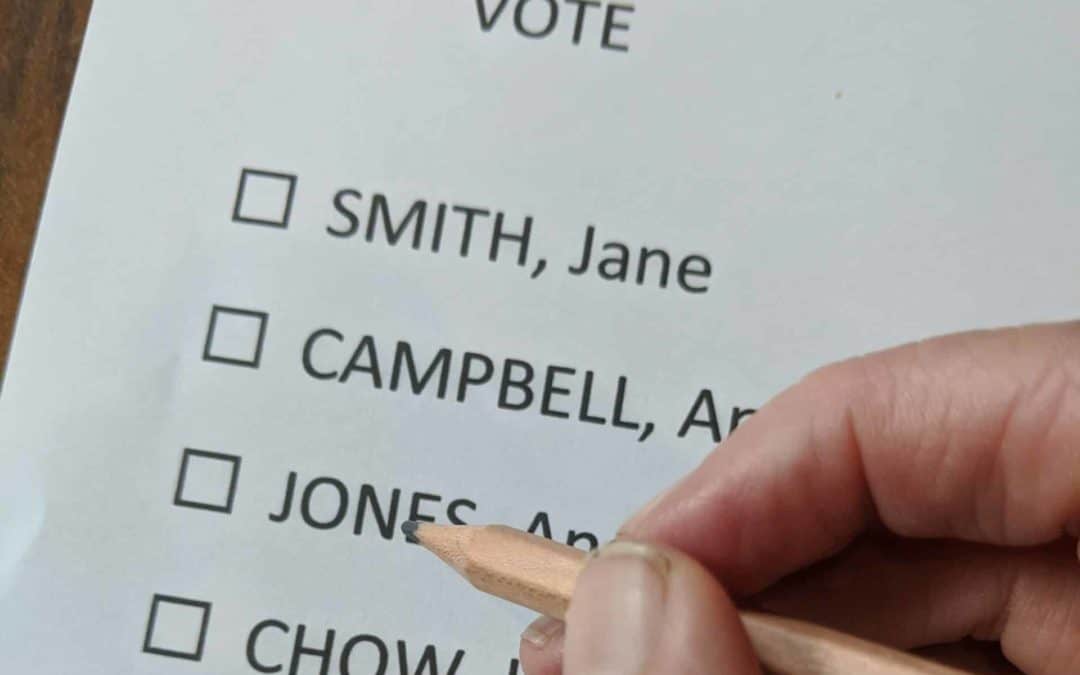JAMES POYNER
ROUNDABOUT EDITOR
The 2020 Local Council Election will proceed, as planned, on October 24, 2020.
For the first time in Victorian electoral history, the 2020 local election will be entirely conducted as a postal vote.
In 2016, 72 of the 78 participating councils conducted a postal vote.
Geelong did not participate in 2016, as it was in administration, and in 2020, the Councils of Casey, Whittlesea and South Gippsland are excepted for the same reason.
As well as restrictions put in place by the Coronavirus Pandemic, the 2020 elections also take place under new legislation; the Local Government Act 2020 (The Act).
Between Coronavirus and The Act, there are new rules that newspapers and newsletters need to be aware of, to ensure the content they print is in line with The Act and to be aware of the ways in which candidates will be allowed to campaign, and the statutory rights around election advertising.
With limits around gatherings in place, print media may have increased pressure to produce electoral content, so it is in everyone interest to understand the statutory requirements, as the penalties for breaches are severe.
Know your Council/Ward/Candidate
A combination of the VEC Representation Review, which concluded in 2019 and the changes to ward structure imposed by the Minister for Local Government, following the ascension of The Act, the ward your readers reside in, and how that ward/municipality is represented at council, may have changed since the 2016 election.
The VEC Website has a dedicated Know Your Council section (see link at bottom of article), providing maps of the bureaucratic structure of a given municipality, as well as information about who has nominated to run as a candidate in 2020.
The VEC is stressing the importance of making sure voters are aware of which ward they reside in and who the candidates are.
Maps illustrating Ward Structure for all municipalities are available on the VEC website, and when used in conjunction with editorial material relating to the 2020 Local Elections may be downloaded and printed in your publication — at the VEC Media Briefing in late August, CNAV specifically put this question to the VEC and they confirmed we had to right to reproduce these maps, in our publications, when used to support election articles.
From September 17, the VEC will also begin to publish details about nominated candidates, which will include contact details.
The nomination period runs from September 17 to 12pm, September 23.
At the end of each day, between these dates, a list of candidates will be available from the municipality’s Election Office and the VEC website, at midday on September 23, the nomination period will have closed, and the list will no longer be amended.
Each candidate will be given the opportunity to provide a 300-word statement as part of the ballot packs.
Election period
The Election Period runs from 12pm on September 23 to 6pm on October 24.
All ballot papers are mailed out to voters in early October must be returned to the VEC by 6pm on October 23, these can be delivered to the Election Office or posted via Australia Post.
Note: all posted ballot papers must be postmarked before 6pm, October 23.
The VEC have allowed until 12pm on October 30 for the return of “late returns”, this allows Australia Post time to deliver all ballots posted prior to the close of voting.
The final date to declare elections is Friday, November 13.
Statements and articles
The Act has rules around “electoral matter” which editorial teams need to ensure are met, failure to meet these requirements can result in a fine.
Statements from Candidates and articles that may influence how someone votes must carry an authorisation statement, this statement must contain the name and address of the person who authorised the statement along with the words “authorised by” or a phrase to that effect.
Note if the same material is when used on a website or on social media must also carry an authorisation statement — this can also be a link to a place where the statement is displayed.
Articles about the mechanics of an election, or to report on a meeting or another event which is related to the election but is not intended to influence the outcome of the election do not require authorisation statements.
Advertising
All candidate advertisements relating to the election must carry the word “Advertisement” in at least 10pt, in the headline.
Local Councils have a statutory requirement to advertise in print media about the forthcoming election.
If there is no “local paper”, the VEC will display their advert on its website (on the Know Your Council page) as a method of meeting this requirement.
CNAV publications are encouraged to contact their local councils to inform them that running their local council election advertisement in their publication, meets council’s statutory requirements.
This requirement was highlighted to media by the VEC, in the wake of the shrinking of commercial local newspapers.
For more information about elections in your local municipality, visit www.vec.vic.gov.au/voting/2020-local-council-election/elections

